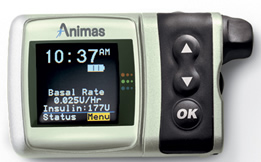Earlier this year, I started using the EzCarb and the EzBG features on my pump a bit more. Previously, I really only used them for correction insulin doses. I use an Animas Vibe pump and I'm told that on the Medtronic pump this feature is called the Wizard.
Since I've started using this feature I have noticed a reduction in the number of hypos that I have been having.
 Before, I had a tendency not to factor in my Insulin on board, I didn't really have a way to calculate it. Insulin on board is the term used to describe how much insulin is left working in your body from the last bolus and how active it is.
Before, I had a tendency not to factor in my Insulin on board, I didn't really have a way to calculate it. Insulin on board is the term used to describe how much insulin is left working in your body from the last bolus and how active it is.
Also, I would only factor in a correction amount of insulin if I was over 10 mmols/L (180 mg/dL).
I have to say that since using these features I feel like I have reduced the number of hypos that I have. However, I have nothing to back up my theory, it's just a hunch! But it feels nice.
I also like it because it separates out my insulin dose so that I know how much of my insulin is related to the carbohydrate, how much is a blood glucose correction and how much I have to reduce for my Insulin on Board.
Here's to continually making improvements and to tiny triumphs!
Disclaimer: I have not been paid by anybody in relation to this post.










